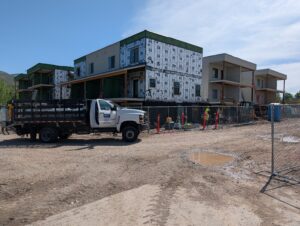IRS case rulings specific to cost segregation for modular buildings aren’t readily available. However, general IRS guidance and rulings do cover cost segregation strategies that can apply to modular buildings. Cost segregation allows building owners to accelerate depreciation on certain components of a building, resulting in potential tax savings. This strategy identifies assets that have shorter depreciable lives (such as equipment and furnishings) and reclassifies them from longer-life structural assets. This can be particularly valuable in modular construction. Components may often qualify for shorter recovery periods due to their temporary or portable nature.
The IRS’s Cost Segregation Audit Techniques Guide provides a framework for how to conduct these studies. This guidance emphasizes the use of accurate documentation. This is especially important in modular buildings as they often involve multiple components, including structural and non-structural elements. The guide lists several approaches to ensure compliance, including detailed engineering records and cost estimates when exact numbers aren’t available. While modular components might qualify for accelerated depreciation, substantiation and quality documentation are essential to avoid disputes with the IRS.
Rulings like Hospital Corporation of America, 109 T.C. 21 have influenced the IRS’s stance on property qualifications, including tangible personal property and shorter-life classifications. Since modular buildings often contain many moveable or temporary assets, they could potentially benefit from this classification, but documentation on qualifying assets is critical.
For modular building owners, working with cost segregation specialists familiar with IRS standards is beneficial, especially to identify and document components that may qualify for shorter depreciable lives. The tax benefits can be substantial, especially with bonus depreciation options that allow for faster write-offs under current law.
EVstudio specializes in Reversible Design (TM), which provides the requisite planning, design, execution, and documentation necessary to navigate this process. Reach out to our experts today if you are interested in learning more. For more information on IRS guidance and audit techniques for cost segregation, you may refer to the IRS’s Cost Segregation Audit Techniques Guide or consult a cost segregation professional.











